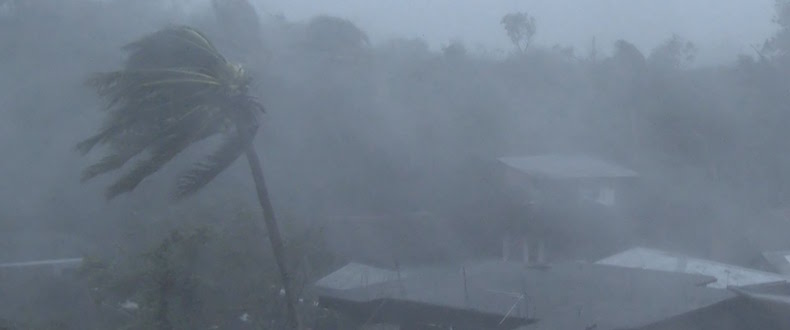While a hurricane may be an impressive sight from outer space, it can be a devastating event for those in its path on the ground.
When these storms are defined as being a Category 3 or higher on the Saffir–Simpson hurricane wind scale (SSHWS), they are considered a major hurricane or tropical cyclone. When we hear major storm system names like Sandy, Wilma or Andrew—and now Harvey and Irma— we’re reminded of the destruction these types of storm systems can inflict upon everything in their paths.
Damage to roof coverings is a leading problem during hurricanes and other coastal storm events. High winds, debris and rain can damage the interior of a building and cause excess moisture to become trapped. Excess moisture can lead to mold unless action is taken quickly to dry a building. Preparing your roofing system is important for minimizing damage, health threats and expense. Other actions taken during and after a storm can also help protect your roofing system.
Preparations Before the Storm
You should make sure you have prepared your roof for a hurricane well in advance. Review your warranty and your insurance policy. It’s important to know that your warranty doesn’t ensure that your roof will withstand a hurricane. The manufacturer typically states that coverage includes materials provided by the manufacturer and the labor provided by the authorized roofing contractor.
Routine maintenance and inspections will validate the performance of the roof system and allow you to fix any damage that might cause it to be even more susceptible to the wind and rain produced by a hurricane. Retaining the inspection information will provide proof that the roofing system was functioning properly before a major wind event. If you haven’t had a regular maintenance check prior to hurricane season, it’s recommended you schedule one immediately. Also be sure to take photos of your roofing system prior to a threat. This will be helpful when you need to document damages.
Other roofing system items you should pay attention to include:
- Removing antennas or loose objects
- Securing HVAC units and exhaust/intake fan covers
- Clearing interior drains, gutters and downspouts
- Inspecting the edges and flashings for proper securement
- Covering skylights with plywood or a metal cap (if applicable)
What to Do During a Hurricane
Protect yourself. If you’re in the building, make sure you and your employees find a windowless, interior room for shelter. Your safety is most important. Don’t check for leaks or other failures until you get the all clear.
You Got the All Clear, Now What?
It’s time to assess the condition of your roofing system. While assessing, exercise caution as your roof may be a dangerous area to navigate. If you see visible damage to the roof or the building, don’t attempt to fix it yourself. Assess the damage and contact your insurance agency to begin the claim process. You’ll need to take photos of the damaged roofing system to compare side by side with the photos you took prior to the storm.
Next, call your trusted roofing contractor. They can assess the damage and give accurate recommendations for next steps. During this time of hardship, beware of frauds. Contractors without proper credentials could show up in the area claiming they can help repair your damaged roofing system. Only consult with and pay trusted contractors.
FiberTite has a temporary roofing membrane to help protect your damaged building for up to a year after damage. Click here for more information.
-1.png?width=500&height=271&name=FiberTite_Only%20(500px%20wide)-1.png)



-1.png)